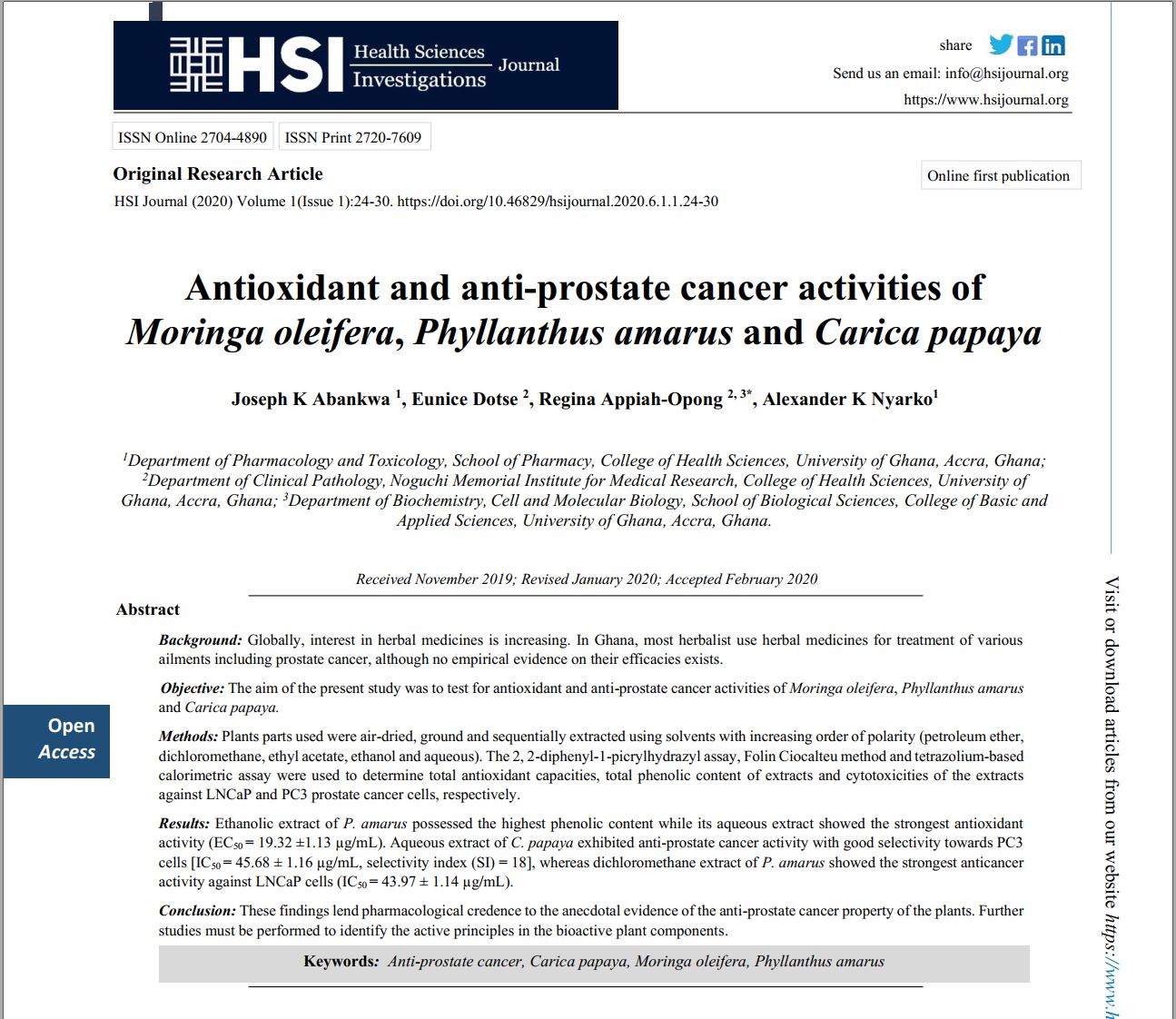Antioxidant and anti-prostate cancer activities of Moringa oleifera, Phyllanthus amarus and Carica papaya
Anti-prostate cancer activities of Moringa, Phyllanthus, and Carica species
Abstract
Background: Globally, interest in herbal medicines is increasing. In Ghana, most herbalist use herbal medicines for treatment of various ailments including prostate cancer, although no empirical evidence on their efficacies exists.
Objective: The aim of the present study was to test for antioxidant and anti-prostate cancer activities of Moringa oleifera, Phyllanthus amarus and Carica papaya.
Methods: Plants parts used were air-dried, ground and sequentially extracted using solvents with increasing order of polarity (petroleum ether, dichloromethane, ethyl acetate, ethanol and aqueous). The 2, 2-diphenyl-1-picrylhydrazyl assay, Folin Ciocalteu method and tetrazolium-based calorimetric assay were used to determine total antioxidant capacities, total phenolic content of extracts and cytotoxicities of the extracts against LNCaP and PC3 prostate cancer cells, respectively.
Results: Ethanolic extract of P. amarus possessed the highest phenolic content while its aqueous extract showed the strongest antioxidant activity (EC50 = 19.32 ±1.13 µg/mL). Aqueous extract of C. papaya exhibited anti-prostate cancer activity with good selectivity towards PC3 cells [IC50 = 45.68 ± 1.16 µg/mL, selectivity index (SI) = 18], whereas dichloromethane extract of P. amarus showed the strongest anticancer activity against LNCaP cells (IC50 = 43.97 ± 1.14 µg/mL).
Conclusion: These findings lend pharmacological credence to the anecdotal evidence of the anti-prostate cancer property of the plants. Further studies must be performed to identify the active principles in the bioactive plant components.


